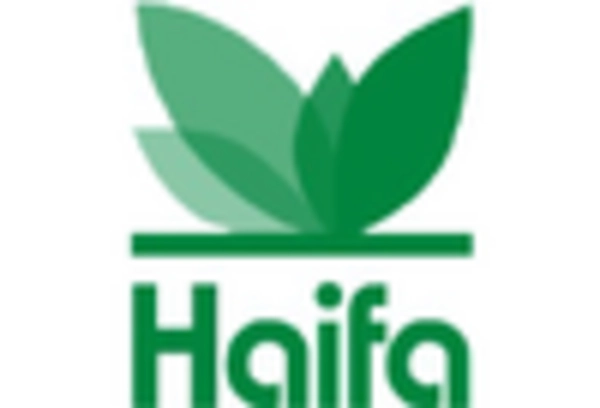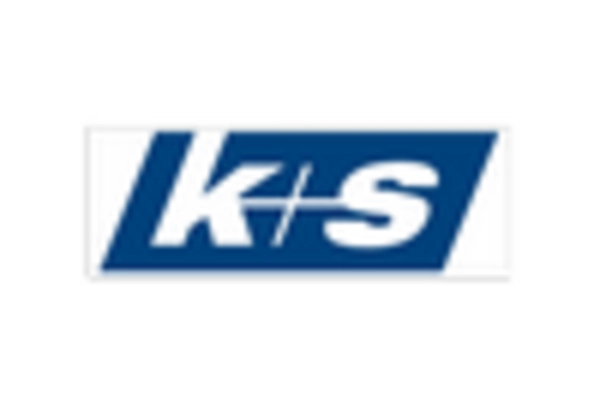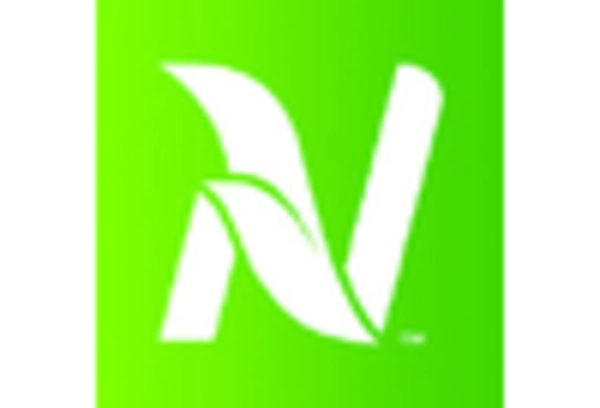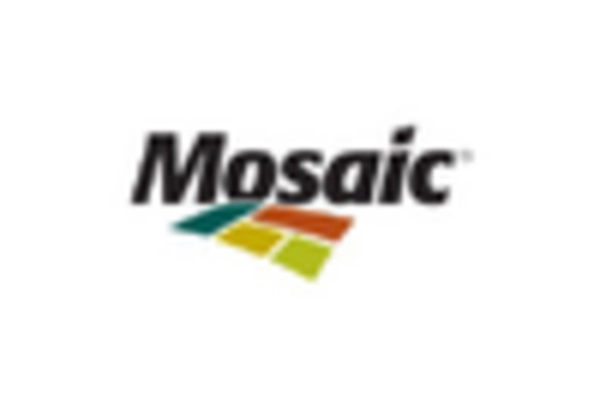Soil Health Awareness
There is a growing awareness regarding soil health among farmers and agricultural stakeholders, which is significantly influencing the Potassium Humate Market Industry. As soil degradation becomes a pressing concern, the need for effective soil amendments is increasingly recognized. Potassium humate is known for its ability to enhance soil structure, increase microbial activity, and improve nutrient availability. This awareness is reflected in the rising adoption of potassium humate products, as farmers seek to restore and maintain soil fertility. Market data indicates that regions with intensive agricultural practices are particularly focused on soil health initiatives, leading to a projected increase in potassium humate usage. The Potassium Humate Market Industry is thus positioned to grow as more stakeholders prioritize sustainable soil management practices.
Rising Demand in Horticulture
The horticulture sector is experiencing a surge in demand for potassium humate, which serves as a vital component in promoting plant growth and health. The Potassium Humate Market Industry is witnessing increased utilization in nurseries and greenhouses, where the need for high-quality soil amendments is critical. Recent data suggests that the horticultural segment accounts for a significant share of the overall market, driven by the growing popularity of ornamental plants and landscaping. Potassium humate enhances root development and improves water retention, making it an attractive option for horticulturists. As urbanization continues to expand, the demand for aesthetically pleasing green spaces is likely to propel the Potassium Humate Market Industry further, as more professionals seek effective solutions for plant care.
Sustainable Agriculture Practices
The increasing emphasis on sustainable agriculture practices is a primary driver for the Potassium Humate Market Industry. Farmers are increasingly adopting organic farming methods, which often require natural soil amendments like potassium humate to enhance soil health and fertility. This trend is supported by data indicating that the organic farming sector has been growing at a rate of approximately 10% annually. As consumers demand more organic produce, the need for effective soil conditioners becomes paramount. Potassium humate, known for its ability to improve nutrient uptake and soil structure, is thus gaining traction among agricultural producers. The Potassium Humate Market Industry is likely to benefit from this shift towards sustainability, as more farmers seek eco-friendly solutions to enhance crop yields while minimizing environmental impact.
Government Support for Organic Inputs
Government initiatives aimed at promoting organic farming and sustainable agricultural practices are playing a crucial role in driving the Potassium Humate Market Industry. Various countries have implemented policies that encourage the use of organic inputs, including potassium humate, to reduce chemical fertilizers' reliance. This support is evident in the increasing number of subsidies and grants available for farmers who adopt organic practices. Market data shows that regions with strong government backing for organic agriculture are experiencing higher growth rates in potassium humate consumption. As these policies continue to evolve, the Potassium Humate Market Industry is likely to see sustained demand, as farmers are incentivized to incorporate natural soil amendments into their farming systems.
Technological Advancements in Agriculture
Technological advancements in agriculture are significantly impacting the Potassium Humate Market Industry. Innovations in agricultural practices, such as precision farming and soil health monitoring, are leading to more efficient use of soil amendments, including potassium humate. These technologies enable farmers to apply potassium humate more effectively, optimizing its benefits for crop production. Data indicates that the integration of technology in agriculture is on the rise, with many farmers adopting smart farming techniques to enhance productivity. As these advancements continue to proliferate, the Potassium Humate Market Industry is expected to grow, as farmers increasingly recognize the value of using high-quality soil amendments to improve crop yields and sustainability.


















Leave a Comment